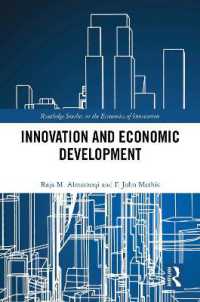- ホーム
- > 洋書
- > 英文書
- > Computer / General
Full Description
Automated visual recognition tasks such as image classification, image captioning, object detection and image segmentation are essential for image and video processing. Of these, image segmentation is the task of associating pixels in an image with their respective object class labels. It has a wide range of applications within many industries, including healthcare, transportation, robotics, fashion, home improvement, and tourism.
In this monograph, both traditional and modern object segmentation approaches are investigated, comparing their strengths, weaknesses, and utilities. The main focus is on the deep learning-based techniques for the two most widely solved segmentation tasks: Semantic Segmentation and Instance Segmentation. A wide range of deep learning-based segmentation techniques developed in recent years are examined. Various themes emerge from these techniques that push machines to their limits, and often deviate from human perception principles. In addition, an overview of the widely used benchmark datasets for each of these techniques, along with the respective evaluation metrics to measure the models' performances, are presented. Potential future research directions conclude the monograph.
This monograph serves as a good introduction to the automated visual recognition task of image segmentation and is intended for students and professionals.
Contents
1. Introduction
2. Traditional Methods in Image Segmentation
3. Deep Models for Semantic Segmentation
4. Deep Models for Instance Segmentation
5. Deep Learning Models for 3D and Video Segmentation
6. Deep Learning Models for Panoptic Segmentation
7. Datasets
8. Evaluation Metrics
9. Challenges and Future Directions
10. Conclusion
Acknowledgements
References








